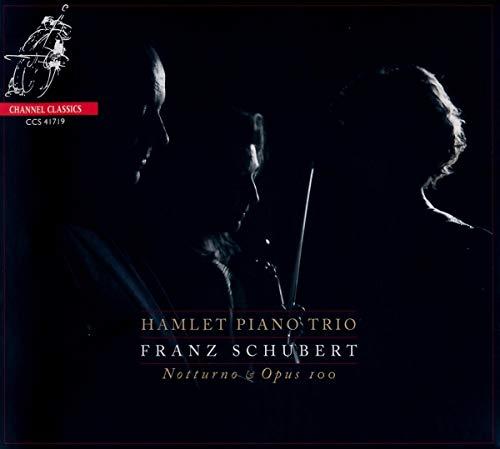Some of Franz Schubert’s music – like the Trout Quintet or the Ave Maria – is heard time and again, while other pieces are hardly ever played. Even when the focus is on his chamber music, these extremes are evident. Of all fifteen string quartets, Death and the Maiden is played most, while others are true Cinderellas. The wonderful String Quintet in C major is played fairly frequently, and the two Piano Trios a little less. The present recording features beside opus 100, a great rarity, the Notturno in E flat major opus post.148 D897 for violin, cello and piano. Like much other chamber music, this piece was probably first played among
Schubert’s friends, or in his home, with the composer at the piano, his brother Ignaz or Ferdinand on the violin and father Schubert on the cello. Among the Schuber family the piece was known as the Adagio in E flat major. The publisher Diabelli fished it out of the composer’s estate in 1844 and issued it under the fantasy name Notturno. Today we know that it was written as second movement for the Piano Trio in E flat major opus 100, but then rejected by the composer himself. In its melodies and modulations Schubert’s pioneering style in the nineteenth century is clearly recognisable.














